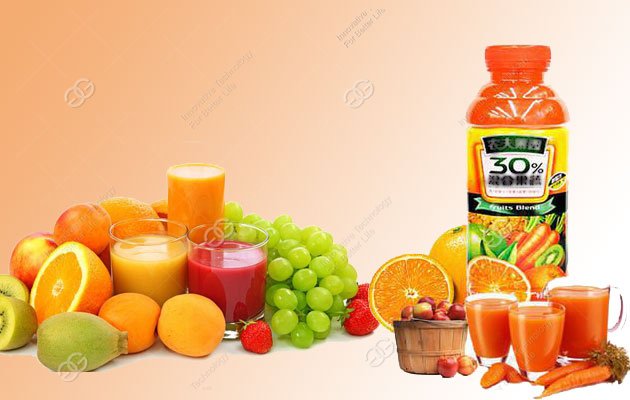What Do You Know About Concentrated Juice ?
 Oct 29 2020
By admin
Oct 29 2020
By admin
How to define concentrated juice?
The concentrated juice is made by distilling the fruit into a raw juice and then concentrating it in a low-temperature vacuum to evaporate a part of the water. In the preparation of 100% juice, the natural water lost in the concentration process must be reduced in the concentrated juice raw material. An equal amount of water is prepared into an article having the color, flavor and soluble solid content of the original fruit pulp.


What is the difference between concentrated juice and ordinary juice?
1, different materials
Pure freshly squeezed juice in the process of processing, without sugar, water, preservatives and any flavoring agents, completely preserve the original flavor of the fruit, so the selection of materials is very strict, must use fresh high-quality apples to ensure the taste of the juice. The concentrated juice can be added with sugar, water, citric acid and other flavoring agents during the reduction process, and the taste can be arbitrarily adjusted according to the needs, so that when the material is selected, the residual fruit and the fruit can be used.
2, different nutritional values
The pure fresh juice is a fruit puree that is directly filled, filtered and sterilized in a fresh and complete state, and is directly filled in a vacuum and sterile environment, completely retaining natural nutrients, and thus is rich in nutrients. During the high-temperature purification process, the concentrated juice loses the original moisture of the fruit, destroys the nutrient molecules of the fruit, and causes most of the nutrients to be lost, so the nutritional value will be reduced.
3: Different quality
100% of freshly squeezed NFC juice refers to the quality of the juice, that is, 100% original flavor. 100% of the concentrated juice refers to the concentration, that is, the concentrated raw juice after evaporation and purification at a high temperature. Adding sugar, water, citric acid, etc. before the packaging to the original concentration of the reducing juice, also known as 100%.
How is concentrated juice produced?
Raw materials → washing fruit → washing → crushing → juicing → clarification → sterilization → concentration → filling → finished product.
Technical points:
(1) Juice preparation: Juice preparation must be made of mature, sound and high-quality apple raw materials to produce high-quality apple juice concentrate.
(2) Recovery of aromatic substances: The turbidity is removed from the juice, heated by a heat exchanger, and pumped into an aromatic substance recovery device, and the aromatic substances are released together with evaporation of water. In general, when the aromatic substance is recovered, the evaporation amount of the juice is 15%, and the concentration of the apple fragrance concentrated is 1:150.
(3) Clarification: Clarification is an important pretreatment measure before concentration. Only the decomposed pectin begins to concentrate without clarification.
(4) Concentration: The evaporation time of the apple juice concentrating device is usually several seconds or several minutes, and the evaporation temperature is usually 55 to 60 °C. At such a short time and at such a low evaporation temperature, unfavorable changes in product composition and sensory quality are not caused. If the evaporation time of the concentrating device is too long or the evaporation temperature is too high, the apple juice concentrate will change color and taste due to the appearance of sucrose coking and other reaction products.
The main methods of concentration are vacuum concentration, freeze concentration, and reverse osmosis concentration. The clarified juice is concentrated to 1/5 to 1/7 by a vacuum concentration apparatus, and the sugar content is 65% to 68%. Since pectin, sugar and acid coexist to form a part of the gel, the concentration limit of the turbid juice is 1/4.
(5) Filling and storage: The apple juice concentrated from the concentrating equipment should be quickly cooled to below 10 °C and then filled. If concentration is carried out using a low-temperature evaporation concentration device, the plated heat exchanger is required to heat the concentrated juice to 80 ° C, heat-fill for several tens of seconds, and then rapidly cool after sealing. In order to prevent quality changes, the concentrated juice after filling should be refrigerated at 0 to 4 °C.

